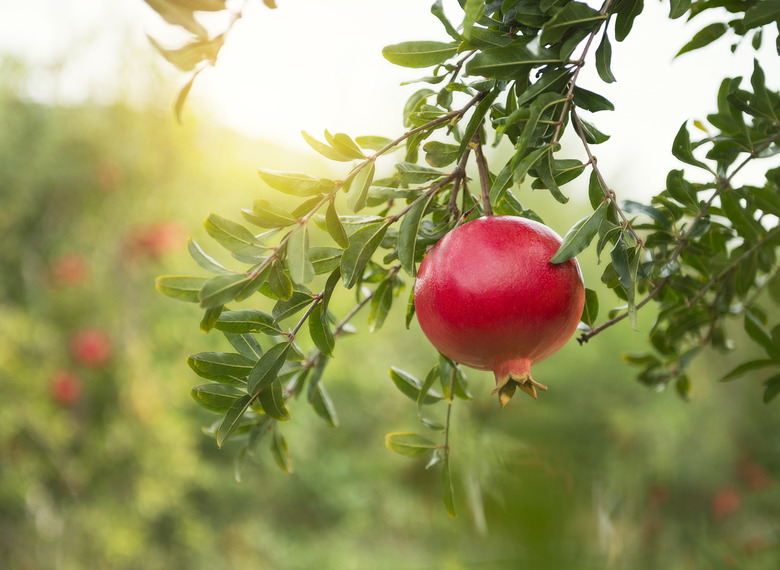No Flowers On A Pomegranate Tree
Native from the Himalayas westward to Iran and Afghanistan, pomegranate trees (Punica granatum) flourish in the intense heat of summertime as well as exposure to abundant sunshine. In the U.S., grow pomegranates on slightly acidic (6.0 pH), neutral (7.0 pH) or slightly alkaline soil (8.0 pH) across U.S. Department of Agriculture hardiness zones 8 through 10 or 11.
Although these large shrubs or 10- to 12-foot small trees tolerate drought, pomegranate tree flowers are produced more prolifically, which results in increased fruit yield, if the well-draining garden soil is moist. Aside from moisture level, there are several other factors that influence pomegranate flowering — or lack of flowering — on a pomegranate tree. If you have no flowers on a pomegranate tree, these are a few potential causes:
- Immature trees
- Insufficient light
- Improper pruning
- Late spring frost or freeze
- Nutrient-poor soil
Pomegranate Tree Flowers
Pomegranate flowers vary in color, depending on cultivar, and include shades of yellow, bright orange, orange-red, red, and white. Although pomegranate plants are grown for their edible fruits, the flowers are irresistible to hummingbirds. Gardeners who are willing to harvest some of the flowers without letting them develop into fruits can use these edible blossoms to garnish dishes and liven up a salad.
Plants produce their showy flowers during the warm months. Depending on climate, that means blooming as early as mid to late spring if winters are warm and mild, or into the early summer elsewhere. If the balance of summer and fall remain warm, intermittent blooms may continue, although they may not form fruits before temperatures cool by winter's start.
Insufficient Light Levels
Inadequate light levels are a primary reason pomegranate plants fail to produce any flowers. The North Carolina State Extension recommends a garden exposure that provides at least 6 or more hours of direct sun daily, especially from spring to fall. The more sun and the warmer the growing season's temperatures, the better.
Pruning Considerations for Pomegranates
Pomegranate plants develop flowers on new growth. Plants should be pruned (only if necessary) in late winter or very early spring when the plants are just ready to end their winter dormancy. The Missouri Botanical Garden offers an exception to this seasonal pruning rule: Prune the suckering shoots from the base whenever they sprout to prevent them from shading mature branches and pulling energy from the primary fruiting limbs.
Even lightly pruning the new growth, which is a coppery or red color maturing to glossy green, too late in spring can result in little to no flowers early in the season. Also, a hard pruning that removes too much new growth can severely restrict a plant's ability to regenerate quickly enough to produce the first flowers of the season.
Environmental Stressors Can Inhibit Flowering
Besides inadequate light, other environmental stresses can reduce flower production in pomegranates. Soggy soils can reduce plant vigor and make it more susceptible to root-rot diseases, specifically those caused by fungal pathogens.
A late, untimely frost or freeze in spring can kill newly emerging stems, leaves, and pomegranate buds that would have developed into fruits. These damaged plants must regenerate new stems before they bloom, which could delay flowering for weeks. If the summer is cool and cloudy, such stems may produce fewer blooms. From spring to early fall, pomegranates respond well to regular watering and fertilizing.
Pomegranate Age Before Producing Flowers
As a rule of thumb, pomegranates begin to produce fruits after three to four years of growth and establishment after germination or sapling planting. This suggests that flowering may not occur immediately if plants are too young, because they are focusing their energy on root establishment and branch growth.
